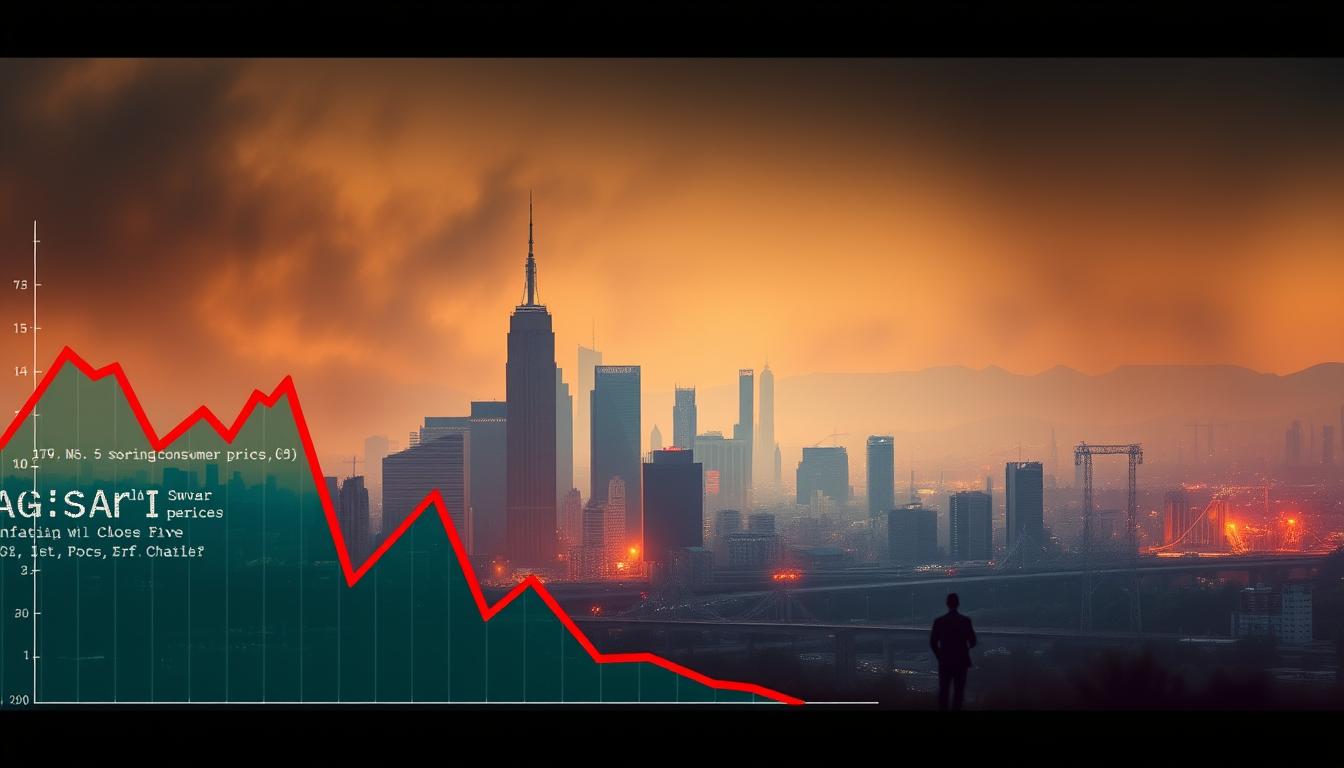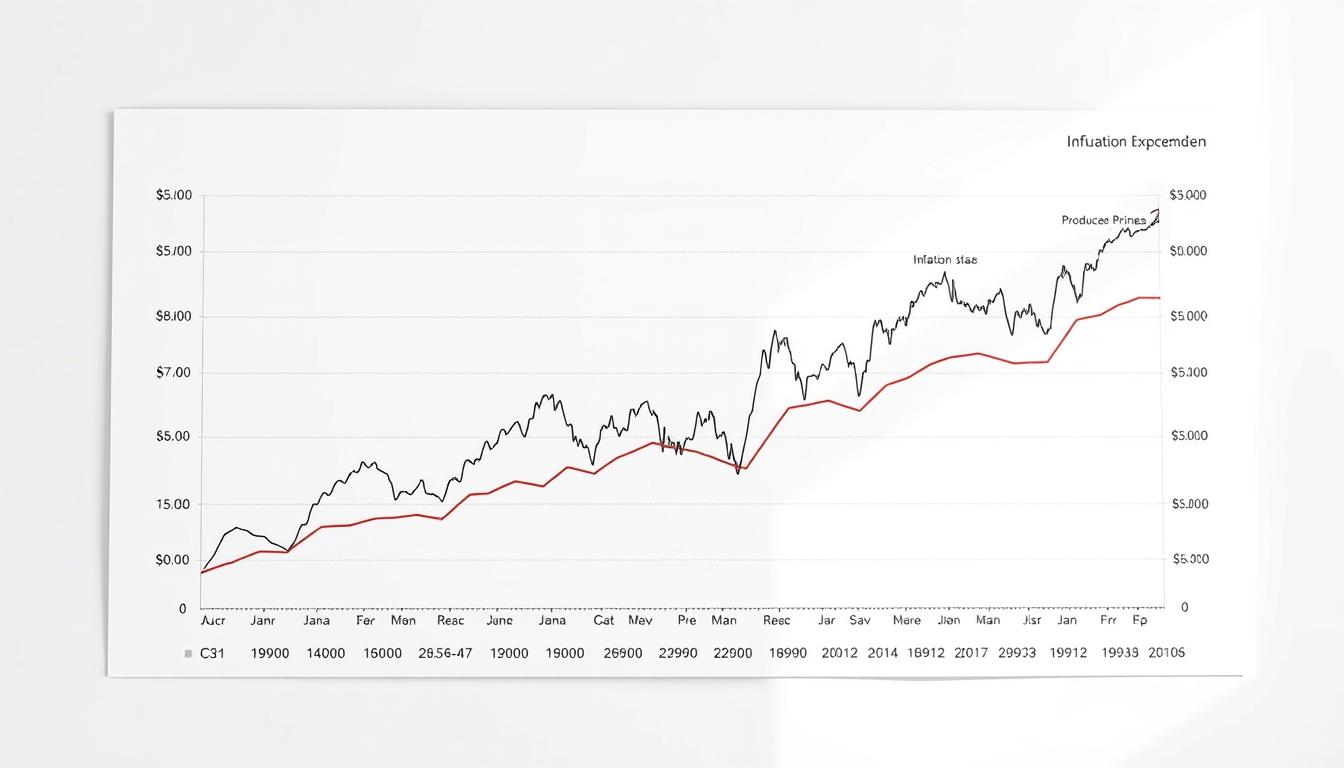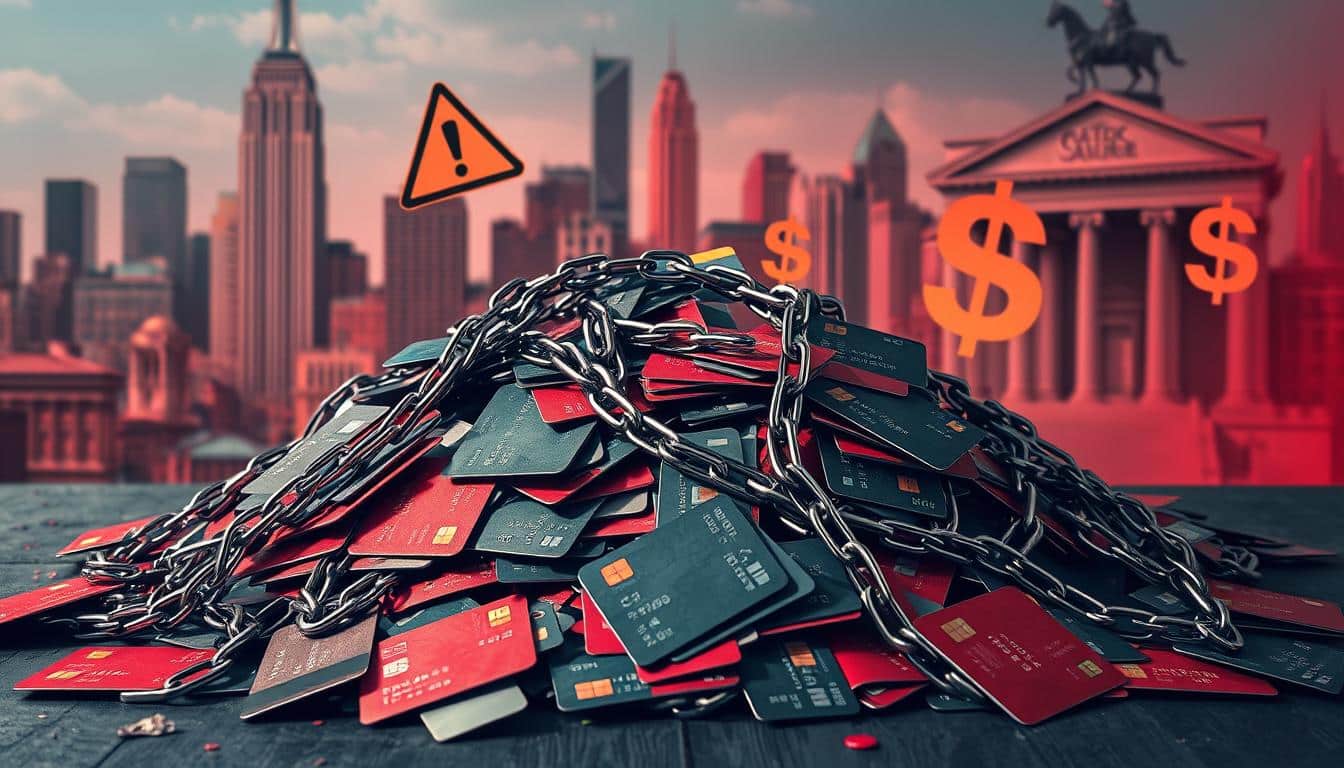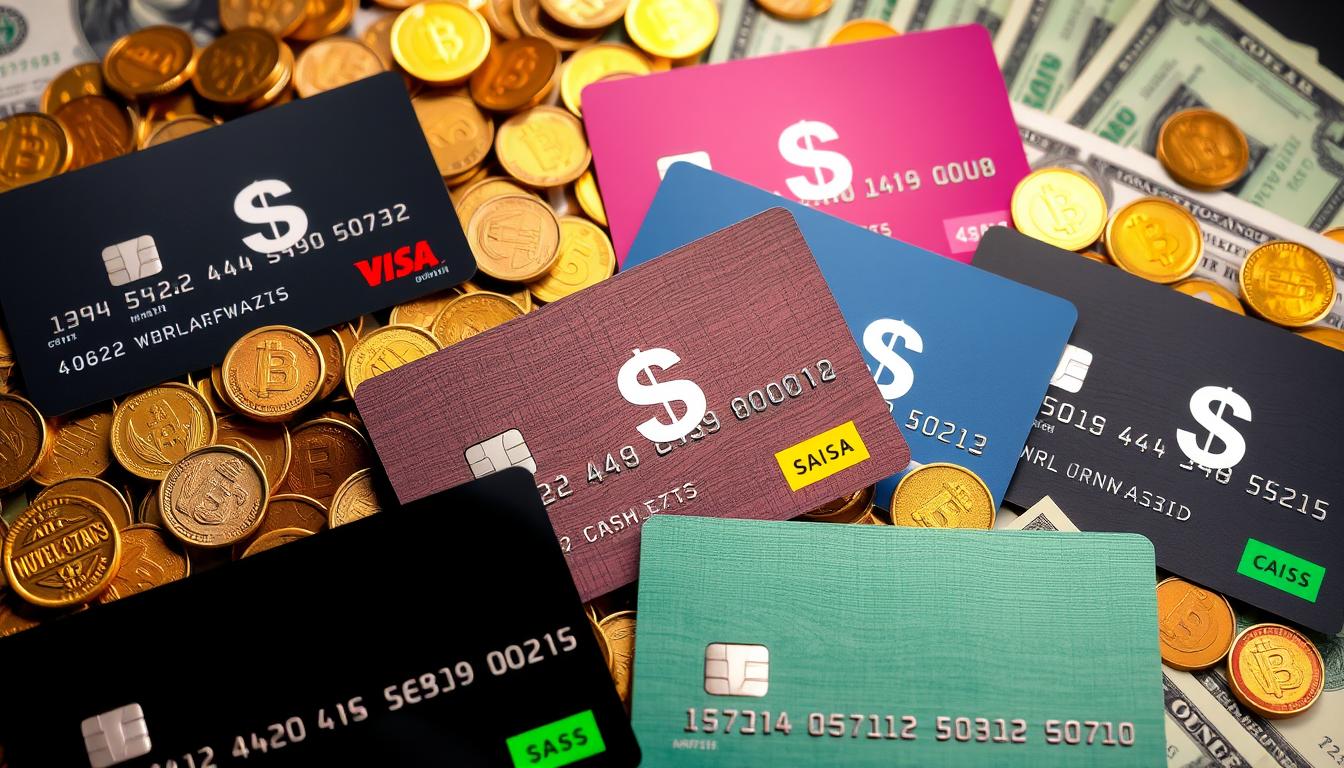Inflation deeply affects the US economy, touching everything from what people can buy to the country’s financial health. It leads to higher interest rates and shifts in the national debt. An alarm rang in June 2022, when the yearly increase in consumer prices hit 9.1%, a peak not seen in 40 years. This was due to increased demand and supply chain issues.

GBTI Visa Gold Card
Acting firmly, the Federal Reserve managed to lower these rates. Inflation fell to 2.4% by September 2024, then slightly climbed to 3.0% by January 2025. Knowing these shifts helps us grasp how inflation influences our money and the market.

Anúncios
What Is Inflation and How Is It Measured?
Inflation means prices for things like food and housing go up over time. This makes each dollar you have buy less than before. It’s important for everyone because it changes how people spend money and invest.
Anúncios
Definition of Inflation
Inflation is when the cost of almost everything goes up. Because of this, your money doesn’t go as far as it used to. This can make things like your weekly grocery shopping or rent more expensive.
Key Inflation Indices
To figure out inflation, experts use special tools called inflation indices. The Consumer Price Index (CPI) is one well-known tool. It looks at how prices change for city dwellers. Another tool, the Personal Consumption Expenditures (PCE) price index, checks how much consumers are spending differently. It’s what the Federal Reserve looks at closely. There are also other tools like the Producer Price Index (PPI) and the GDP price index. They help us see inflation from the viewpoint of businesses and the whole economy.
How Prices Are Tracked
Groups like the Bureau of Labor Statistics (BLS) and the Bureau of Economic Analysis (BEA) track inflation. They collect a lot of data on prices to figure out how they’re changing. This helps people who make policies, economists, and the public get a clear picture of inflation’s effects on our economy.

Historical Context of Inflation in the US
The U.S. economy has seen important episodes of inflation. These have greatly influenced the nation’s financial scene. To grasp current economic trends, it’s key to know this inflation history. Each inflation period brought its own reasons and effects, shaping consumer actions and policy making. We will look into major historical phases and how they still impact U.S. inflation.
Past High Inflation Periods
High inflation periods have been crucial in U.S. economic history. Especially notable were the late 1960s and 1970s, with soaring inflation due to low joblessness and high oil costs. These years led to big changes in how money was managed. Early 1980s policies, like hiking interest rates, helped stop the inflation and fix the economy.
Inflation Trends from 1980s to Present
From the mid-1980s to the COVID-19 pandemic start, inflation was pretty stable. For years, this steadiness meant predictable economic conditions. Then, the pandemic hit, causing a sharp inflation rise from more government spending and supply issues. This shift has become a main focus for those studying the economy and making policies today.
Current Inflation Landscape
By early 2025, inflation has calmed down, after peaking at 9% in June 2022. The Federal Reserve has been key in moving the economy towards steadiness. Their careful rate changes have helped ease inflation. Keeping an eye on these trends is vital. They deeply influence what people buy and how the economy might grow.
Inflation Measurement Tools: CPI, PCE, and Others
It’s vital to know how to measure inflation to understand economic health. Tools like the Consumer Price Index (CPI), Personal Consumption Expenditures (PCE), and Producer Price Index (PPI) are key. Together with the GDP price index, they track price changes for both consumers and producers.
Consumer Price Index (CPI)
The Consumer Price Index (CPI) is crucial for monitoring price changes for urban consumers. It helps adjust income levels for government aid and ensure employees are paid fairly. Through the CPI, we can see the true cost of living, allowing adjustments in economic policies and spending.
Personal Consumption Expenditures (PCE)
The Federal Reserve prefers the Personal Consumption Expenditures (PCE) Price Index. It captures price changes, including what insurance covers for healthcare. The PCE looks at many goods and services, giving a full picture of consumer spending and changes in buying habits.
Producer Price Index (PPI) and GDP Price Index
The Producer Price Index (PPI) focuses on price changes from the producer’s side. It shows the costs producers face, helping businesses and policymakers understand market trends. On the other hand, the GDP price index offers a wider look at pricing by including exports and excluding imports. This gives a complete view of the economic activity and inflation.
What Causes Inflation?
Knowing why inflation happens is key to understanding its impact on our economy. There are two main types: demand-pull and cost-push inflation. They come from different situations and affect inflation rates in their own ways.
Demand-Pull Inflation
Demand-pull inflation is when there’s more demand than what the economy can make. This can be caused by:
- Government spending to boost economic growth.
- Consumers feeling confident and spending more.
- Low interest rates making loans and buying attractive.
This shows the economy is doing well but can make prices go up if demand keeps beating supply.
Cost-Push Inflation
Cost-push inflation happens when it costs more to make things. Reasons include:
- The price of raw materials, like oil, going up.
- Workers wanting higher pay to cover their living expenses.
- Problems in the supply chain that make making things more expensive.
As costs to make products rise, companies charge more. This makes many things more expensive for consumers.
Inflation Expectations and Their Impact
What people think will happen with inflation matters a lot. Both businesses and consumers change their actions based on these expectations. For example:
- Workers might ask for higher pay expecting prices to rise.
- Companies could raise prices thinking their costs will go up.
This thinking can keep inflation going as decisions are made based on what people believe will happen economically.
Inflation’s Impact on Consumers
As prices go up, the effect on people’s wallets becomes clear. The struggle between what their money can buy and not getting raises shows. This makes buying everyday items harder. So, people change how they spend and manage money.
Effects on Purchasing Power
Inflation quickly eats away at what your money can do. With higher prices, the same paycheck buys less. Families work hard to keep their life as normal as possible.
But, if paychecks don’t grow too, things get tough. People must choose what’s most important. That often means less fun stuff.
Wage Stagnation and Cost of Living
When paychecks don’t grow, inflation hits harder. People’s earnings can’t keep up with their needs. This makes it hard for families to keep up.
Those with fixed incomes, like retirees, feel it more. Their money doesn’t stretch as far. Worry about money grows. This can make people cautious about how they spend.
Inflation’s Effects on Businesses and the Economy
Inflation brings big challenges for businesses. It changes how they operate and plan for the future. They must find the right balance between raising prices and keeping customers happy. Adjusting prices is key to keeping profits up despite higher costs for goods and services.
The way a company deals with inflation affects its profits now and its position in the market later.
Pricing Strategies and Profit Margins
Companies use different strategies to handle the effects of inflation. Raising prices helps protect profits. But, it’s important that customers feel the price hike is fair. Companies should think about:
- How customers see the value of their products.
- The competition and what the market is like.
- Using pricing based on the value or changing prices as needed.
If companies don’t explain why prices are going up, they might lose customers. That’s why choosing the right pricing strategy is very important during times of inflation.
Investment Decisions Amid Inflation
Investing during inflation has its ups and downs. With costs going up, companies often have to rethink their spending and plans for growing. They might be more careful, focusing on:
- Projects that pay off quickly.
- Waiting to grow until inflation slows down.
- Looking for other ways to get money or different financing options.
By understanding these investment changes, companies can make smart choices. This helps them stay ahead while dealing with the impact of inflation on their business.
Inflation in Relation to Monetary Policy
The Federal Reserve has a key role in our economy, especially in handling inflation with its monetary policy. It aims to keep inflation steady, close to 2%. By changing the federal funds rate, the Reserve affects how much borrowing costs. This change in cost then influences how people spend money. Understanding this link is key to knowing how inflation affects various economic areas.
The Role of the Federal Reserve
Controlling inflation is a major job for the Federal Reserve. It uses different tools like open market operations, setting reserve requirements, and adjusting the federal funds rate. These tools help control how much money is in the economy and people’s demand for goods and services.
Interest Rates and Inflation Control
Interest rates are a main way to manage inflation. By raising rates, the Federal Reserve can make money tighter, which reduces spending and slows down inflation. On the flip side, lowering rates makes borrowing easier, boosting spending. This can help the economy but also increase the chance of higher inflation. This delicate balance is crucial for the Federal Reserve when using monetary policy to keep the economy stable.
How Inflation Affects Interest Rates and Loans
Inflation and interest rates have a big link that changes how money works in our economy. When inflation goes up, banks often hike up interest rates. They do this to protect the loan’s value over time. This makes loans like mortgages and auto loans cost more.
Impact on Mortgage and Auto Loans
With higher inflation, lenders bump up their rates. This means you’ll pay more for mortgages and auto loans. It gets harder for people to buy homes as loan costs climb. This can make fewer people able to afford new homes. Car buyers face challenges, too, with higher rates affecting their payment plans.
Borrowing Costs for Consumers and Businesses
It’s not just people buying homes or cars that feel the impact; businesses do too. When it costs more to borrow money, businesses may hold back on growing. They might delay new projects or not hire as much. It’s important for everyone to understand these changes. This knowledge helps people and businesses make smart decisions in a changing economy.
Strategies to Cope with Inflation
Dealing with inflation means taking smart steps and making wise choices. People should tweak their money management plans to keep their buying power. This means looking closely at budgets, focusing on must-haves, and seizing good buying chances.
Adjusting Personal Finance Plans
It’s crucial to check your financial strategy often to handle price increases. You should:
- Review your monthly spending plan to focus on essentials.
- Cut back on non-essential costs to save for important things.
- Look for deals and discounts to make the most of your money.
Investment Options During Inflation
Choosing where to invest during inflation can affect your money in the long run. Consider mixing up your investments to include:
- Physical assets like property and goods that keep their value.
- Securities that protect against inflation.
- Stocks from overseas that might earn more.
Conclusion
It’s important to understand inflation and its effects on the US economy. Inflation means prices go up, which can change how much you can buy, your earnings, and investment choices. Businesses need to change their plans to deal with these economic changes, and that can affect many areas.
To keep our finances safe, both people and companies must manage inflation well. Knowing about inflation and how it works helps us stay strong during tough times. This way, we can be ready for economic ups and downs.
To make sure we have steady growth and a stable economy, we must handle inflation right. Looking ahead, it’s critical to keep learning about and managing inflation. This will help us deal with the complex financial world we live in today.
FAQ
What is inflation?
How does inflation impact consumer purchasing power?
What factors contribute to inflation?
How does the Federal Reserve control inflation?
What are the different inflation measurement tools?
How does inflation affect businesses?
What role do interest rates play during inflation?
What strategies can individuals employ to combat inflation?
Conteúdo criado com auxílio de Inteligência Artificial


